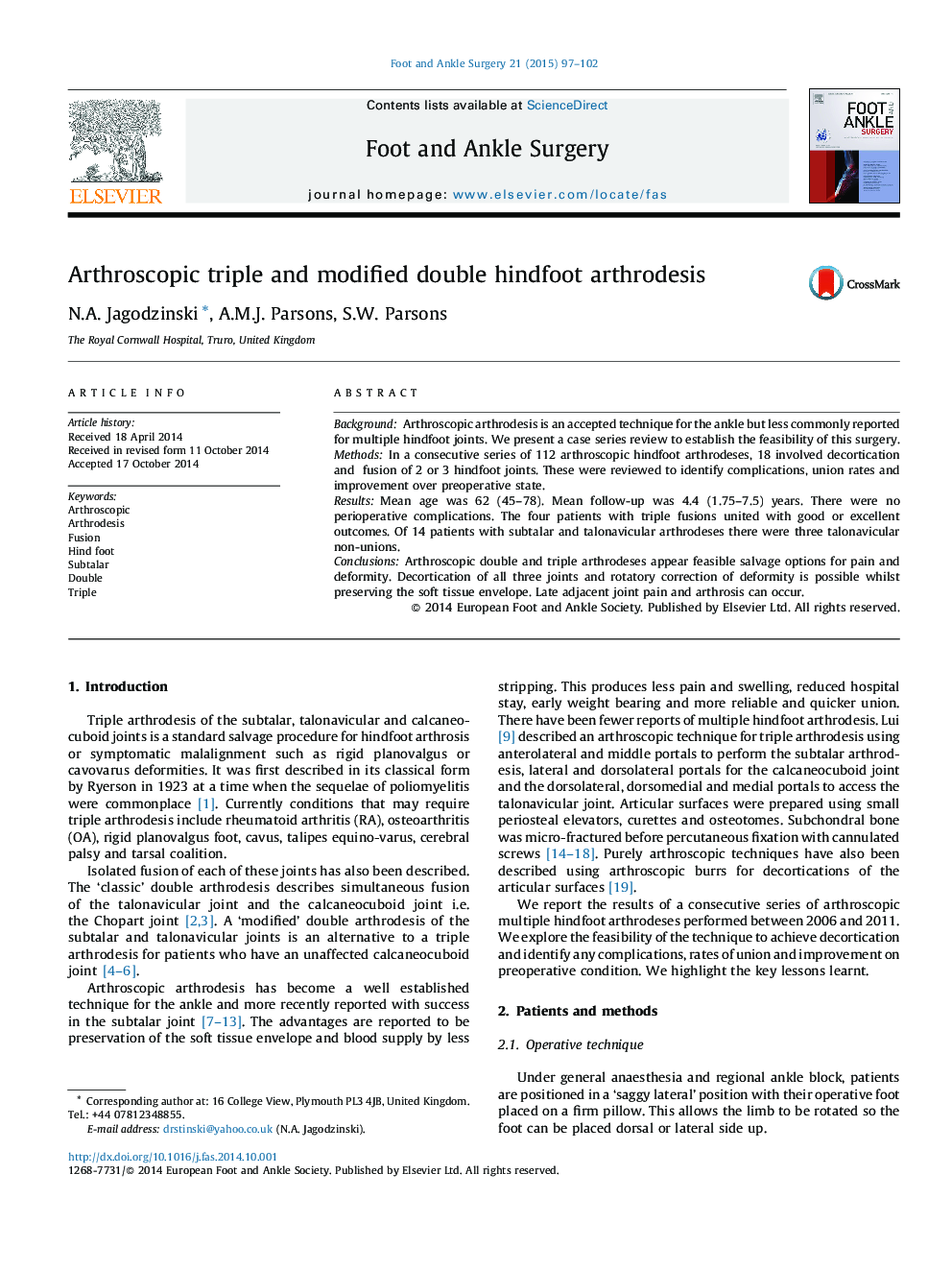| Article ID | Journal | Published Year | Pages | File Type |
|---|---|---|---|---|
| 4054607 | Foot and Ankle Surgery | 2015 | 6 Pages |
•Surgical technique and retrospective case series (mean follow-up 4.4 (1.75–7.5) years) to establish feasibility of arthroscopic arthrodesis of multiple hindfoot joints.•Four patients with triple fusions united with good or excellent outcomes.•Of 14 patients with subtalar and talonavicular double arthrodeses there were three talonavicular non-unions.•These appear feasible salvage options for pain and deformity.•Decortication of all three joints and rotatory correction of deformity is possible whilst preserving the soft tissues.
BackgroundArthroscopic arthrodesis is an accepted technique for the ankle but less commonly reported for multiple hindfoot joints. We present a case series review to establish the feasibility of this surgery.MethodsIn a consecutive series of 112 arthroscopic hindfoot arthrodeses, 18 involved decortication and fusion of 2 or 3 hindfoot joints. These were reviewed to identify complications, union rates and improvement over preoperative state.ResultsMean age was 62 (45–78). Mean follow-up was 4.4 (1.75–7.5) years. There were no perioperative complications. The four patients with triple fusions united with good or excellent outcomes. Of 14 patients with subtalar and talonavicular arthrodeses there were three talonavicular non-unions.ConclusionsArthroscopic double and triple arthrodeses appear feasible salvage options for pain and deformity. Decortication of all three joints and rotatory correction of deformity is possible whilst preserving the soft tissue envelope. Late adjacent joint pain and arthrosis can occur.
